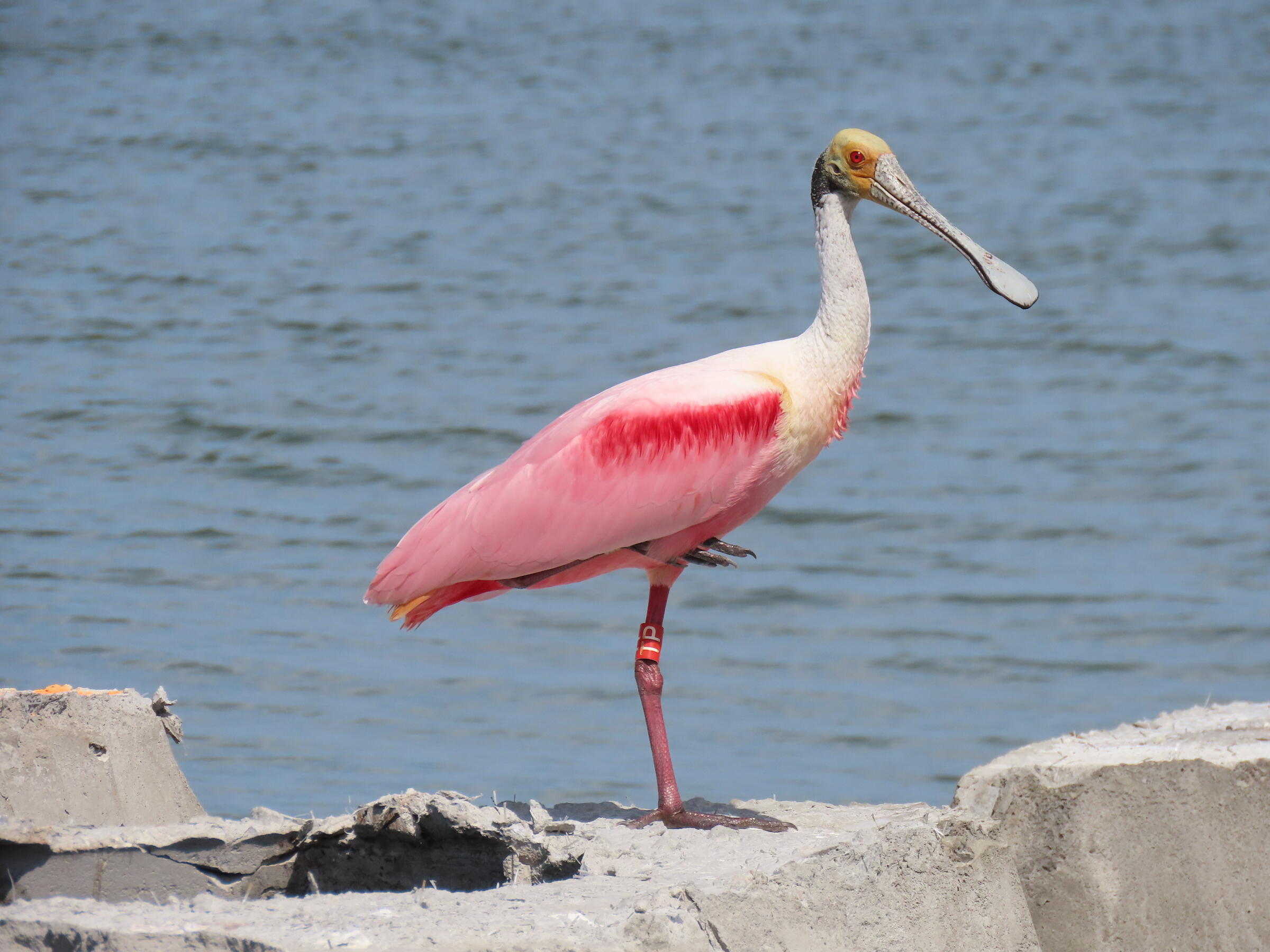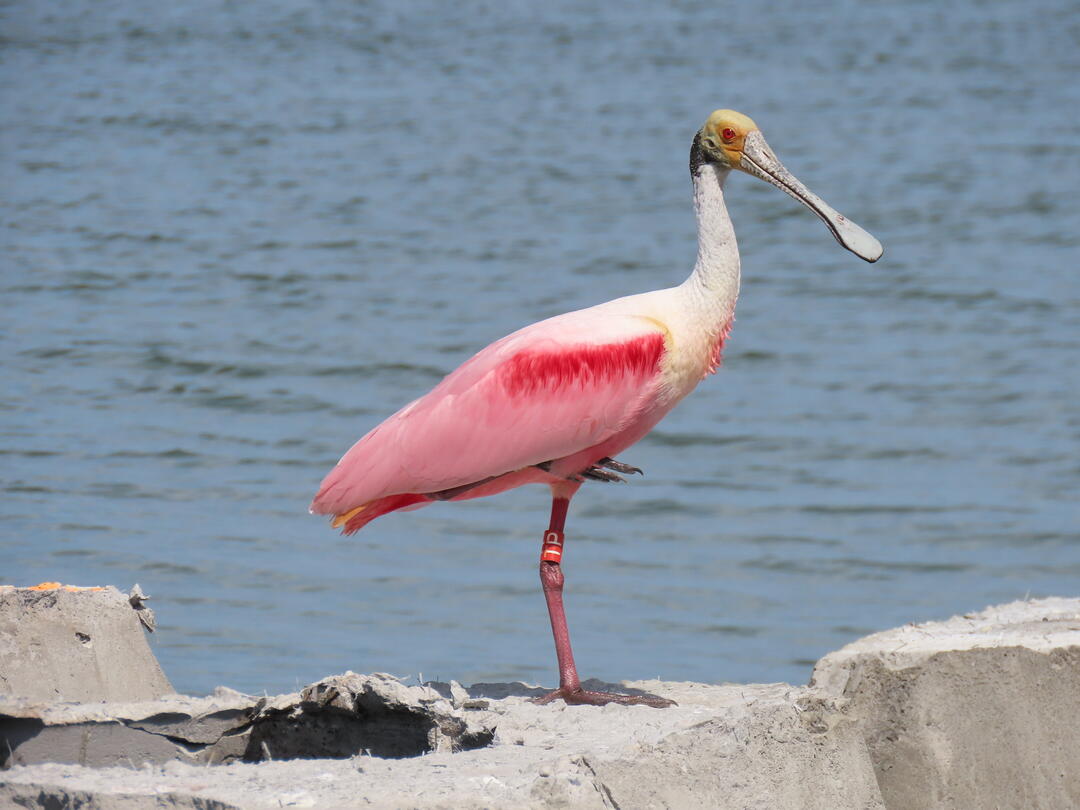In a new study published in the Florida Field Naturalist, researchers at the Florida Fish and Wildlife Conservation Commission's Fish and Wildlife Research Institute used bird bands across sea, shore, and wading bird species to study how breeding and wintering populations along the Gulf of Mexico and the Atlantic Coast are connected. Using bird banding data collected between 1920 and 2021, the team found that a significant percentage of birds banded under permits issued by the Bird Banding Lab (BBL) spent time on both coasts. This was true across 13 species, and particularly for Black Skimmers, Royal Terns, Roseate Spoonbills, and Sandwich Terns.
They continue: “Within Florida, coastal connectivity was notable for some of the most imperiled species (American Oystercatcher, 9%; Black Skimmer, 9%; Least Tern, 11%; Roseate Spoonbill, 12%; Tricolored Heron, 19%; Reddish Egret, 29%), although a large dataset from the American Oystercatcher Working Group suggested a somewhat lower level of connectivity (4%) for American Oystercatchers.”
WHAT ARE BIRD BANDS?
For Audubon’s coastal team, every sighting of a bird band is a moment of discovery. Whether on the barrier islands of the Gulf Coast, the rooftops of Tampa, or the beaches of Northeast Florida, reporting bird bands moves science forward by giving researchers and land managers critical data they can use to protect birds and the places they need.
Bird bands are light metal or plastic bands applied to the legs of birds to make them individually recognizable when they are resighted. Only certain people with a permit from the federal and state government are allowed to oversee the handling of birds for this purpose. Bands are specifically designed to be lightweight, and their use must follow strict protocols to ensure the birds’ safety.
WHAT DOES THIS MEAN?
When working to improve resilience of vulnerable sea and shorebird populations, we cannot focus on one region or coastline to the exclusion of others. Particularly for initiatives that aim to mitigate the harm from the Deepwater Horizon oil spill, restoration and protection projects on both coasts could boost populations of the species most often found along both coasts.
Audubon continues to partner with members, volunteers, and partners across more than 300 stewarding sites to help sea, shore, and wading birds raise their families.
HAVE YOU SEEN A BANDED BIRD?
You can report bird bands at reportband.gov.









